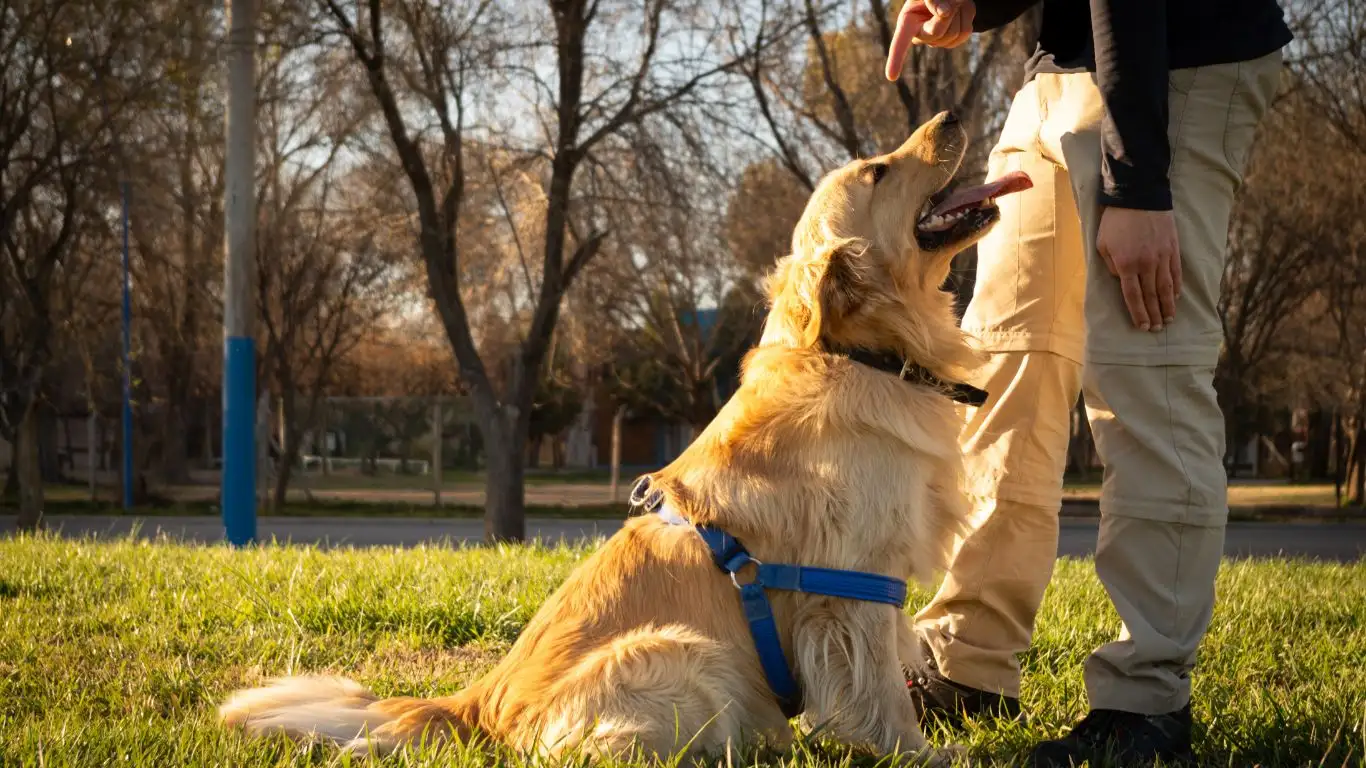How to Train Your Dog to Stop Barking at Sirens – Effective Tips
Have you ever been caught in that moment when your dog hears a siren, and suddenly, all hell breaks loose? It’s a sound that sends them into a frenzy, barking uncontrollably, and no amount of calling them back seems to work. It’s a frustrating situation for both the dog and the owner. As a Canine-Assisted Therapy Trainer, I’ve spent years working with dogs to help them manage their reactions to all sorts of triggers—sirens being one of the trickier ones to work with. The good news? It’s entirely possible to train your dog to stop barking when hearing sirens with a little patience, consistency, and the right techniques. Let’s break it down in a way that’s easy to understand and apply in your day-to-day training.
Understanding Why Dogs Bark at Sirens
First things first, let’s talk about why your dog might bark when they hear sirens. Dogs have an incredible sense of hearing, much more sensitive than ours, and they can pick up high-pitched sounds like sirens long before we do. In most cases, this sound is not only loud but also disturbing to them, especially if it’s unfamiliar or seems to be coming from nowhere. For many dogs, sirens trigger a sense of anxiety, alertness, or even fear. The barking could be a response to this confusion or distress.

From my experience working with therapy dogs, I’ve learned that how we, as trainers or pet parents, react to the barking plays a significant role in whether or not it gets worse. If the barking is met with frustration or punishment, it could actually reinforce the behavior, making it harder for the dog to stop. On the flip side, when we address the barking with calm, clear guidance, we can help our dogs learn a more appropriate response to the sound of sirens.
Creating the Right Environment for Training
Before we dive into the specific techniques for getting your dog to stop barking at sirens, it’s important to set up the right environment. As any experienced trainer will tell you, the environment plays a huge role in how successfully a dog will respond to training. Dogs, especially those working in therapeutic settings, are highly sensitive to the energy around them, and if there’s tension or frustration in the air, it can impact their ability to focus and learn.
In my therapy work, I always make sure the space feels calm and safe for the dog. That doesn’t mean you have to have a professional training facility or an ideal setup—it just means creating an atmosphere that minimizes distractions and stress. The goal is to help your dog feel secure and focused so they can better process the sounds and distractions around them.

Positive Reinforcement: Your Best Friend in Training
One of the most effective ways to train your dog to stop barking when hearing sirens is through positive reinforcement. This is a training technique that rewards your dog for calm, desirable behavior rather than punishing them for unwanted behavior. I cannot stress enough how important this approach is—not just for stopping barking at sirens, but for building a solid, trusting relationship with your dog. Punishment or yelling at your dog may only make them more anxious, confused, or even fearful of you.
When I work with therapy dogs, I always use positive reinforcement to reward calm behavior during distractions, whether it’s a siren, a car honking, or even a person entering the room. It’s all about consistency. Here’s how you can get started:
- Step 1: First, identify the behavior you want to encourage. In this case, it’s your dog remaining calm when they hear a siren.
- Step 2: As soon as your dog starts barking at the siren, calmly redirect their attention. You can do this by using a cue like “look at me” or offering a treat to grab their focus.
- Step 3: Once your dog is quiet, even for a few seconds, immediately reward them with praise, a treat, or a favorite toy. It’s important to reward them at the exact moment they stop barking, so they associate the calm behavior with the reward.
Desensitization: Gradually Exposing Your Dog to Siren Sounds
Another key technique that I use with dogs in therapy settings is desensitization. The basic idea behind desensitization is to expose your dog to the trigger—in this case, the sound of a siren—at a low, manageable volume, and gradually increase the intensity over time. This helps your dog become less reactive to the sound because they start to associate it with something neutral, rather than something that requires an emotional response like barking or anxiety.

To do this, start by playing recordings of siren sounds at a low volume while you’re in a relaxed setting. Don’t wait for your dog to start barking! Instead, engage with them during the sound—play a game, practice commands they already know, or give them a treat. Gradually increase the volume of the siren recordings as your dog becomes more comfortable with the sound. The goal is to make the sound of sirens less alarming for them.
It’s important to go slow during this process. If you push your dog too hard too fast, you could overwhelm them, which will only make the training process longer and more frustrating for both of you.
Other Training Tips to Consider
There are a few more tips and tricks that can help you on your journey to stop your dog from barking at sirens. Some of these might be more situational, but they’re worth keeping in mind:
- Consistent Routine: Dogs thrive on routine. If you can make your training sessions consistent and part of a daily routine, your dog will begin to anticipate the training and learn faster.
- Stay Calm: Dogs pick up on your emotions. If you’re calm, your dog is more likely to stay calm. If you’re anxious or frustrated, your dog will sense that and may become more reactive.
- Use Commands: Teaching your dog a simple “quiet” or “enough” command can be helpful in redirecting their focus when they’re starting to bark at a siren.
Reinforcing Calmness During Siren Sounds
At this point, your dog is starting to associate the sound of sirens with calm behavior and rewards. But, as you know, consistency is key when it comes to training. One of the most critical parts of teaching your dog to stop barking at sirens is to reinforce that calmness during every interaction with the sound. It’s not enough to train them once or twice and hope it sticks. This is where patience and repetition come into play. Trust me, I’ve had many dogs in my therapy sessions who took time to really *get it*. So, don’t be discouraged if it doesn’t happen overnight. The goal is to keep reinforcing the behavior you want to see while gradually increasing the difficulty of the situation.

Now, let’s get into some practical ways to reinforce calmness:
- Regular Sessions: It’s essential to keep practicing, even when your dog seems to have mastered the response. Short, daily training sessions help your dog stay focused and reinforce the new behavior over time.
- Distraction Training: Once your dog is somewhat desensitized to the siren sound at a low volume, start introducing other distractions during the session—like toys or other sounds. This mimics the unpredictability of real-life scenarios and helps your dog generalize their calm behavior.
- Extending Duration: As your dog becomes more comfortable with the sound, you can start increasing the duration of their calmness before rewarding them. Instead of rewarding right after they stop barking, wait a few seconds to reinforce their patience.
By continuously reinforcing calm behavior during training, you’ll help your dog build confidence that being calm in the face of a siren leads to good things. Over time, this can become their default response to the sound.
Managing High-Stress Situations
Even after consistent training, there may still be moments when your dog’s instincts take over, especially in real-world situations when they’re already feeling a bit anxious or overexcited. When this happens, managing the environment becomes just as important as the training itself. I’ve seen this time and time again in therapy dogs: they can be calm and well-behaved in controlled training environments, but once they’re out in public or when something triggers them unexpectedly, it’s a whole different ballgame.

Here’s what you can do to manage your dog’s response in high-stress situations:
- Redirecting Attention: If you’re out on a walk or in a public space and your dog hears a siren, you might not have the luxury of doing a formal training session. This is where redirecting their attention comes in. Using a favorite toy, treats, or even a favorite command (like “sit” or “look at me”) can help shift their focus away from the siren.
- Maintain Distance: If your dog is having a particularly hard time with a siren in a public setting, try to move away from the sound. Dogs can get overwhelmed when exposed to something they’re afraid of, so giving them space to calm down is a smart way to manage the situation.
- Stay Calm Yourself: Your dog will look to you for reassurance. If you stay calm and collected, your dog is more likely to mirror that behavior. The more you remain confident and relaxed, the easier it will be for them to learn to stay calm, too.
These small but effective strategies can help your dog manage their reaction to sirens, especially in real-world situations where training might not always be as structured or predictable.
Using Tools and Devices to Aid Training
Sometimes, in addition to traditional training methods, it can be helpful to introduce tools or devices that can support your dog’s learning. While these are never a substitute for proper training, when used correctly, they can reinforce the behavior you’re trying to instill. I’ve worked with various tools in my career, and when used appropriately, they can really make a difference in speeding up the process.
Here are a few tools and devices that can aid in your dog’s training to stop barking at sirens:
- Calming Aids: Some dogs respond well to calming aids like anxiety wraps or calming sprays (such as those with lavender or pheromones). These can help your dog stay relaxed during training sessions or when they’re exposed to stressful stimuli like sirens. In my experience, calming wraps like the Thundershirt can be quite effective, especially for dogs who get anxious around loud noises.
- Noise Desensitization Tools: There are specific tools designed to help dogs get used to certain noises, including sirens. White noise machines or apps that play siren sounds at a lower volume can help gradually desensitize your dog to the sound without overwhelming them. This can be an excellent complement to your desensitization training.
- Training Collars (When Appropriate): Training collars that vibrate or emit a mild static correction (never harsh!) can be useful in certain situations to help redirect your dog’s behavior. However, these should only be used with a lot of care and under the guidance of a professional trainer. The idea isn’t to punish but to interrupt the barking and refocus your dog’s attention.
When considering any tools, remember that they should never be a shortcut to proper training. They’re just there to reinforce and help in very specific situations, not to replace the foundation of positive reinforcement and desensitization you’re already building.
Real-Life Example: How a Therapy Dog Overcame the Siren Challenge
Let me share a quick story from one of my therapy dog sessions. I worked with a dog named Max, a rescue with a history of fear-based behavior. Max would bark non-stop every time he heard a siren. We started with low-volume recordings and gradually worked up from there. But the real breakthrough came when we took our training out into the real world. One day, while walking down the street, a fire truck went by with its siren blaring. Max immediately froze, ears back, tail stiff. Normally, this would have sent him into a barking frenzy, but this time, I calmly said “focus” and showed him a treat. He immediately turned his attention to me, and we walked away from the noise together.
That moment was a perfect example of how consistent training, combined with real-world exposure, can help dogs overcome even the most intense reactions. Max’s story is a reminder that it’s not about eliminating the behavior altogether—it’s about teaching your dog that staying calm and focused is the best response to a siren or any other trigger.

Maintaining Long-Term Success with Siren Training
As we’ve covered in previous sections, training your dog to stop barking at sirens takes time, patience, and consistency. But once your dog has learned to remain calm in the face of sirens, how do you maintain that success in the long term? The truth is, just like with any behavioral training, reinforcement is essential to ensure that your dog’s new behavior sticks. And the best part? The more you practice, the more automatic the calm response will become. You’ll likely notice that over time, your dog may even stop reacting to sirens without you needing to prompt them.

Here are a few tips to help you keep the training going strong and ensure lasting success:
- Regular Maintenance Sessions: While daily training sessions might not be necessary forever, you’ll want to maintain the behavior by practicing every few weeks. Set aside time to expose your dog to siren sounds and reinforce their calmness. Doing so will help keep them sharp and prepared for any situation, especially if you’ve been in a quieter environment for a while.
- Unexpected Situations: Keep in mind that every encounter with a siren is an opportunity to reinforce your dog’s response. If you happen to be out and about, and a siren blares unexpectedly, keep calm and use the techniques you’ve practiced. The more your dog succeeds in real-life situations, the stronger the behavior becomes.
- Reward Progress: Don’t forget to reward your dog’s efforts, even as they’ve improved. If they remain calm for longer periods or don’t bark at all when the siren is at full volume, acknowledge that progress with treats, praise, or play. Small victories deserve recognition!
Over time, your dog will learn that the sound of a siren no longer needs to trigger a reaction. They’ll start to understand that their calm behavior leads to rewards, which helps to solidify their new, desirable response. Patience is key here; some dogs will need more time than others, but every step forward is a step in the right direction!
Common Mistakes to Avoid
As with any training, there are some common pitfalls that can make the process harder than it needs to be. I’ve seen countless well-meaning dog owners fall into these traps, so let’s go over some mistakes to avoid when training your dog to stop barking at sirens:
- Inconsistent Reinforcement: If you’re inconsistent with rewarding your dog’s calm behavior, they might get confused about what they’re being praised for. Make sure you’re rewarding calm behavior every time—especially in the early stages of training. You can’t expect your dog to make progress if you only reward them sporadically.
- Escalating the Situation Too Quickly: One common mistake is trying to expose the dog to sirens at full volume too early. Start slow and gradually increase the intensity. If your dog is overwhelmed by the sound too soon, you’ll set them back in the training process. Slow and steady wins the race!
- Ignoring Other Forms of Stress: Sometimes, a dog may bark at sirens because they are stressed or anxious for other reasons. If your dog is already in a heightened state—say, after a trip to the vet or a stressful car ride—they may be more reactive. Be mindful of the overall stress levels your dog is experiencing, as this can impact their ability to focus and learn effectively.
- Using Punishment: Punishing your dog for barking at sirens is a big no-no. Dogs don’t associate punishment with their barking behavior in the same way we do. Instead, punishment can cause confusion and lead to further behavioral issues. Stick to positive reinforcement methods for the best results.
Avoiding these mistakes will help keep the training on track and ensure your dog learns the right way to respond to sirens. Always remember that it’s about teaching your dog *what to do* instead of just punishing them for doing something you don’t like.
Understanding the Science Behind Siren Sensitivity in Dogs
If you’ve ever wondered why your dog is so sensitive to sirens, it’s not just because they’re “being difficult.” Dogs’ hearing abilities are much more acute than ours, and they can pick up on frequencies that are inaudible to humans. Sirens, with their high-pitched and sudden sounds, can trigger a stress response in dogs, especially if they’re not used to them.
In fact, research from sources like PetMD and the American Kennel Club suggests that loud noises, like sirens or thunder, can create a fight-or-flight response in dogs, which often manifests as barking, trembling, or even destructive behavior. This is why it’s essential to approach the issue with patience and care—punishing a dog for something they can’t control doesn’t work and can make the problem worse. Understanding the science behind their behavior will give you more empathy and insight as you train.
Additional Resources for Dog Owners
If you’re looking for more information on canine behavior or additional training tips, here are a few trusted resources to explore:
- American Kennel Club (AKC): A great resource for all things dog-related, from training advice to breed-specific guidance.
- PetMD: A reliable source for pet health information and behavior solutions.
- National Institutes of Health (NIH): For a deeper understanding of the science behind animal behavior and health.
These sites can provide more in-depth information on dog training and health, so you can continue improving your dog’s behavior and well-being long after you’ve successfully trained them to stop barking at sirens.
Disclaimer
While the information provided in this article is based on years of experience as a Canine-Assisted Therapy Trainer and the latest training practices, every dog is unique. What works for one dog may not work for another. Always consult a professional dog trainer or behaviorist for personalized advice and training methods tailored to your dog’s specific needs and temperament. The tips provided here are meant as general guidance, and you should always prioritize your dog’s safety and comfort during training sessions.
Remember, training takes time, patience, and consistency. So, keep at it, and soon enough, you’ll be enjoying a more peaceful walk with your dog, no matter how loud the sirens get!






